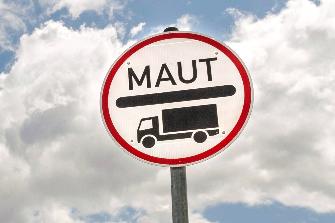How the toll requirement is enforced
Regular enforcement across the whole of Germany ensures that the toll is paid correctly.

Tasks split between Toll Collect and the BALM
The enforcement system monitors correct payment of the toll and compliance with the regulations set out in the German Federal Trunk Road Toll Act (BFStrMG).
The associated tasks are split between Toll Collect and the Federal Logistics and Mobility Office (BALM). Toll Collect is responsible for automatic enforcement with enforcement gantries and pillars. This responsibility also includes recovery of toll in the case of toll non-payment or incorrect toll payment. This official task was assigned to Toll Collect by the German Federal Government.
All further enforcement is carried out by the BALM.
Overview of enforcement types
Compliance with the toll requirement is enforced in four ways. For detailed information, please click on the blue boxes.
-
A total of 300 permanently installed enforcement gantries register approaching vehicles and as traffic is flowing they check whether the vehicle data for the vehicles subject to toll have been properly declared.
If the vehicle is equipped with an OBU, a check is performed to ascertain whether the OBU is working and whether the vehicle data is correctly set. For vehicles subject to toll without an OBU, the licence plate is used by the Toll Collect computing centre to determine whether a valid log-on exists.
If no log-on is present, Toll Collect conducts the necessary investigations and any necessary retrospective toll collection. Information relevant to punishment is forwarded by Toll Collect to the BALM. It is evaluated there. If there is a correct log-on, the vehicle data is immediately deleted.
-
Around 600 enforcement pillars will be checking compliance with the toll requirement on all federal trunk roads. The enforcement pillars will feature similar technological capabilities as the enforcement gantries installed on motorways. If a vehicle passes an enforcement point, an overview, side view and licence plate image are generated. The On-Board Unit sends the data set by the driver and that saved on the On-Board Unit to the enforcement pillar. If the driver has correctly set the number of axles and checked whether the On-Board Unit is ready for toll collection, the image data are discarded.
-
The enforcement gantries can also send the data of potential toll violators to BALM employees parked further along the road. The enforcement team pulls over these vehicles from the traffic and checks them. This enables the BALM employees to immediately clarify the situation. Retrospective tolls and fines can be levied on the spot.
-
BALM mobile teams enforce correct payment of the toll around the clock. The teams drive in enforcement vehicles that function according to similar principles as do the enforcement gantries and pillars. They also receive data from vehicles for which the automatic enforcement indicated doubts as to whether the cooperation obligation was performed properly.
If there is any doubt, the vehicle is pulled over at the next parking area. If the suspicion of a toll offence is confirmed, the inspectors collect the toll retrospectively on the spot and initiate civil offence proceedings. Before continuing their journey, drivers of foreign vehicles must pay the unpaid toll, plus a security deposit amounting to the expected fine, plus additional costs.
-
BALM employees also carry out on-site enforcement across Germany in the form of spot checks. The companies selected for on-site enforcement are selected randomly or based on a specific suspicion. On-site enforcement entails checking whether the toll has been correctly paid in the past, based on shipping documents and fuel receipts, for example.
Consequences of violations
If correct payment of the toll cannot be made, the toll for the route actually travelled is retrospectively collected. If the actual distance cannot be established, the toll is collected retrospectively for a distance of 500 kilometres per journey.
In all cases, the BALM evaluates all information relevant to enforcement and initiates fine proceedings where appropriate.



